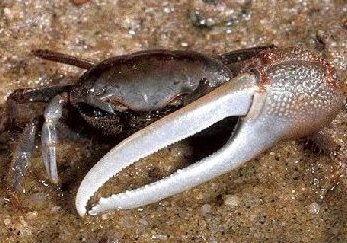Facts About Fiddler crab
Fiddler crabs, belonging to the genus Uca, are captivating creatures commonly found along coastlines worldwide. These semi-terrestrial marine crabs are easily identifiable by their asymmetrical claws: males possess one claw that is dramatically larger than the other. As they grow, fiddler crabs undergo molting, during which they can regenerate lost limbs or claws.
Typically, fiddler crabs inhabit mangroves, salt marshes, and beaches. They adhere to a circadian rhythm, with their activities following a daily cycle. One of the most intriguing aspects of these crabs is their mode of communication. They use a series of gestures and waves, with males performing elaborate displays using their oversized claw to attract females.
Fiddler crabs play a crucial role in their ecosystems, particularly in their feeding habits. By sifting through sediment to find detritus, they contribute to aerating the soil and maintaining healthy wetland environments. Despite their ecological importance, their lifespan is relatively brief, usually lasting up to two years. During the mating season, females select their mates based on the size and quality of the males' claw displays.
The male's large claw serves a dual purpose: it is used both for combat with rivals and for courting potential mates, presenting an intriguing evolutionary conundrum. In terms of reproduction, females carry eggs on their bodies until they release them into the water. Some species have evolved to regrow claws that, while weaker, appear intimidating to rivals.
The genus Uca comprises about 100 species, organized into various subgenera. While fiddler crabs can be kept as pets, they require specific brackish water conditions and cannot survive for long in freshwater environments.

 Zimbabwe
Zimbabwe